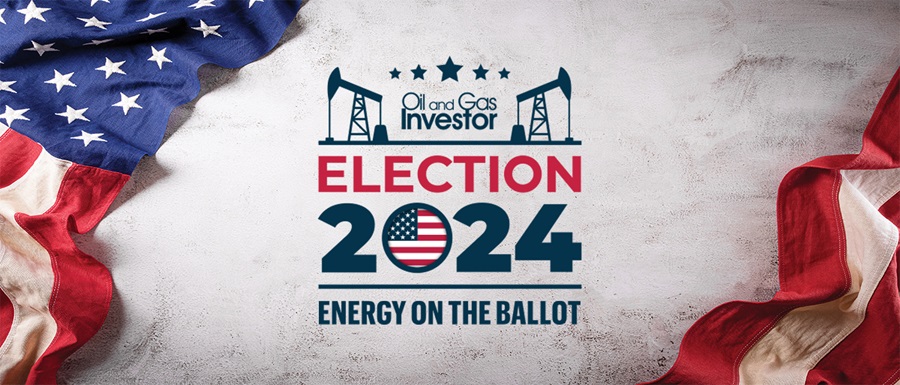Scott Segal is co-chair of the Bracewell law firm’s policy resolution group. He is based in Washington DC.
Before either Vice President Kamala Harris or former President Donald Trump can make good on their campaign promises, they must get elected. And getting elected during a time of economic uncertainty, including high inflation, necessitates a degree of pragmatism on pocket-book issues.

Of course, one of the most important such issues is energy—its price, supply and availability. One recent poll showed that at least nine out of 10 battleground-state voters are at least somewhat concerned about inflation, and they perceive a role for oil and gas production in assisting consumers and small business.
Whether an election really impacts energy prices is hardly material since almost half of Americans believe that a presidential election has more impact on energy prices (including fuel prices) than the actual market forces at play. In reality, presidents have very little direct power to affect energy prices, no matter how restrictive or encouraging their policy choices may be.
Policy at play
The political dynamics of energy may push both candidates into slightly less familiar postures.
Let’s take Harris’ previous positions. In 2019 as a senator, Harris expressed her support for a ban on hydraulic fracturing. Now, after a term in office as vice president, Harris recently told CNN that, “What I have seen is that we can grow, and we can increase a clean energy economy without banning fracking.”
While the passage of the Inflation Reduction Act (IRA) did mark support for a carrot-based clean energy strategy in place of command-and-control limits, it also seems likely that macroeconomic concerns about energy prices and employment in oil and gas played roles, as well. But having cast the tie-breaking vote passing IRA, Harris’s emphasis on the statute is understandable.
With Trump, support for oil and gas production is familiar terrain for the former president’s campaign with references to “drill, baby drill” and “liquid gold under our feet” punctuating his acceptance speech at the Republican National Convention.
However, while Trump has made it clear that he doesn’t support clean energy programs like the IRA, he has been confronted by a growing chorus of support from some Republican legislators in support of clean-energy incentives, particularly because these investments land disproportionately in the pro-construction, wide-open spaces that tend to characterize more politically conservative areas. In a Bloomberg survey, while some $42 billion of IRA money is going to projects in Democratic House districts, almost four times that amount is slated for Republican districts.
What’s ahead?
Despite obvious policy differences on a range of issues, when it comes to energy policy, both campaigns face pressures to balance some clean-energy investments and some support for traditional oil and gas production. That said, once the election is over, we can expect different approach to governance on issues of importance to oil and gas investors. Here are some examples:
Production incentives: A Trump administration would likely press for expedited permitting of oil and gas infrastructure, increased drilling on public lands and offshore, favorable tax policy for production, and a deregulatory impulse that could slow the pace of decarbonization of the power sector. While a Harris administration might disagree on some or all of these priorities, the overturning of the Chevron deference and lingering macroeconomic concerns would likely stay regulatory overreaction.
LNG: The Biden administration announced a pause on consideration of new LNG export terminals. While Harris has not indicated a reversal of this policy, on July 1, a federal district court in Louisiana ordered that pause to be “stayed in its entirety, effective immediately.” And of course, existing terminals or those already underway allow for significant exports already. So, while the importance of climate considerations as part of any public interest analysis will differ depending on the election outcome, it is not clear how effective (or legal) a policy the LNG pause was in the first instance. The first new export terminal approval was announced on Sept. 3.
Global climate accords: In 2015, Trump withdrew the U.S. from the Paris Climate Agreement. In 2021, President Joe Biden placed the nation back in the accord. Trump has committed to taking the U.S. back out of Paris, perhaps even the underlying framework convention, whereas Harris has called the agreement crucial to addressing climate change and to protect “our children’s future.” This is an area of clear difference in governance on climate change, although the real-world significance on domestic energy policy is debatable.
Environmental enforcement: One of the most significant powers of an incoming administration as it relates to energy production is the ability to set priorities for the strength of environmental enforcement. Harris began her career as prosecutor and established one of the first environmental justice units, and that experience likely colors her approach to regulation. By contrast, Trump advisers have suggested a number of reforms, paring back enforcement authorities and reorganizing the U.S. Environmental Protection Agency. This profound difference in approach could change the predictability and cost structure for oil and gas investments, even as both administrations would seem likely to support some permitting reform in support of energy investments.
Presidents can only do what the law allows them to do.
Beyond that, they need the support of a Congress that is often unable to overcome partisan divides on energy topics. While it is tempting to stress the rhetorical differences in approach between the two candidates, real-world considerations like energy prices, investment patterns, and energy security may make the actual outcomes closer than you might think.

Recommended Reading
Guyana Exported a Total of 225 Crude Cargoes in 2024
2025-01-14 - Guyana, Latin America's newest oil producer, is now the region's fifth largest crude exporter after Brazil, Mexico, Venezuela and Colombia.
TotalEnergies' Mozambique LNG Project Faces Delay Beyond 2029
2025-01-22 - TotalEnergies' $20 billion Mozambique LNG project will not be operational by 2029 as hoped, the French oil major said on Jan. 22, citing the need to end force majeure and ensure security at the project site.
Oil Prices Ease as US Tariffs On Mexico Paused for a Month
2025-02-03 - WTI crude futures were down $0.04, or 0.01%, at $72.49 after climbing as much as 3.7% earlier in the session to reach their highest since Jan. 24 at $75.18.
Gas-Fired Power Plant to be Built Close to Austin, Texas
2025-02-06 - The project, to be built by Argan subsidiary Gemma Power Systems, is expected to hook up to the ERCOT grid in 2028.
EIA Reports Big NatGas Withdrawal, as Expected
2025-02-27 - According to the EIA’s weekly storage report, natural gas levels are 238 Bcf below the five-year average and 561 Bcf below the level from the same time last year.
Comments
Add new comment
This conversation is moderated according to Hart Energy community rules. Please read the rules before joining the discussion. If you’re experiencing any technical problems, please contact our customer care team.


